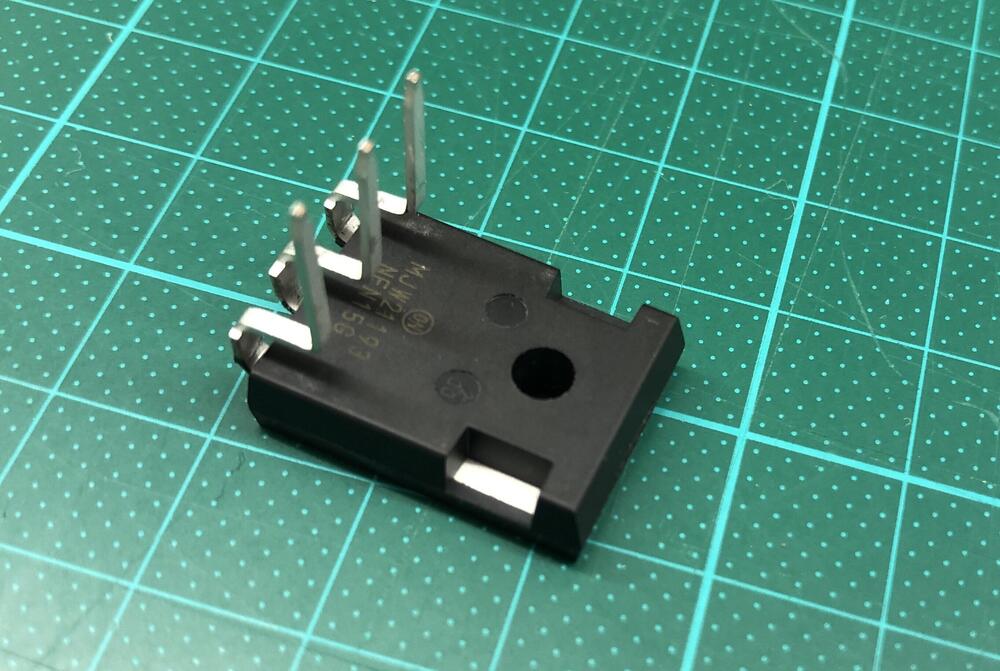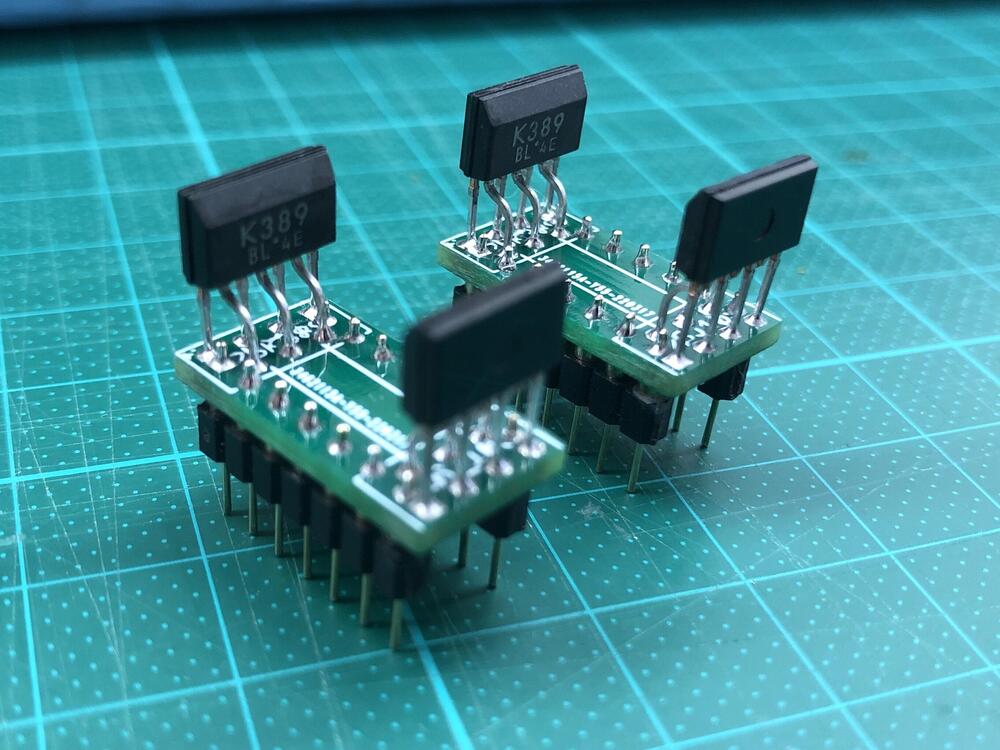
audiostar
Returning Member-
Posts
310 -
Joined
-
Last visited
Content Type
Profiles
Forums
Events
Everything posted by audiostar
-
Yeah, nacsemi sounds legit. Up for how many pieces are we now and at what price? Thanks fpr the group buy.
-
Lol, yeah. What kind of wires are these holding the tube PCB to the side panels, really? And those wood panels, why, to slowdown cooling?
-
goldenreference low voltage power supply
audiostar replied to kevin gilmore's topic in Do It Yourself
Congratulation, very nicely done, time to enjoy some music 👍 -
goldenreference low voltage power supply
audiostar replied to kevin gilmore's topic in Do It Yourself
Answers are in the thread, why not read everything first? -
Finally got some C2M1000170D and can finish my Carbon. Difficult times for DIYers... and availability is getting even worse. Why would you use the black ones? Despite 300V rating they are much more expensive than Phoenix Connectors.
-
I have a couple PCBs left, PM if you need some.
-
You could use 1) two caps in series or 2) just go to 400V PSU. or 570VDC 560uF Vishay https://www.mouser.at/ProductDetail/594-MAL219390125E3
-
For the 400V Carbon, the input cap should be 550V rated and down to 450V is fine for the output cap. Other than that I am not sure if you will hear any difference between 560 and 680uF. I have chosen four identical 680uF 550V FTCap/Mundorf caps. PS: with 360VAC secondaries it looks like you are building a 450V Carbon where 500V caps are pretty much a nogo.
-
That's what I wanted to say, Michael 🙂 Thanks for confirmation!
-
Thanks, Michael! Or something like this, but still on the edge of available space. Best would be mounted straight up on the PCB without heatsink.
-
Hi Kevin, in a Carbon GRLV with 15VDC output, can I get away with not bolting the MJW21193/MJW21194 pass transistors to anything? Don't have enough space on the bottom plate... or any flat, horizontal heatsinks I may use instead of bolting them to the bottom plate? @kevin gilmore Or I can bolt them to the bottom plate, but left and right of the GRLV PCB by extending their leads for about 2-3cm...
-
With the R-core having primary and secondary windings on opposite legs, the capacitance is low, but the leakage inductance is high. Where the toroid has a high(er) capacitance, but lower leakage inductance. Now, because of the tight coupling between the windings, the toroid couples RFI. But because of the low leakage inductance, it has a much lower external magnetic field. The R-Core is better for not coupling RFI between windings. But the leakage inductance is much higher, so may cause hum problems.
-
Nice one. Any particular reason why you have chosen R-Core over Toroid?
-
I have used both Roon and LMS; LMS for like 20 years already, programmed extensions, integrated into AMX.. and before that used what you do, so just comparing based on personal experience only 🙂
-
Not talking about DLNA as well, they use own bit-perfect protocols when streaming from your local server to the clients. Yes, DLNA is crap (and I refuse to use it as well) but not RAAT nor what LMS does. You can install roon on any windows, linux or macos box in your network (and it will mount the media from your wd4100 via smb). LMS is available directly for NAS boxes as well (and is open source). They would then do lib management and presentation, streaming and client control via app or web server (on whatever device) Roon is the best possible music discovery app as well. It will just find more music to listen to than you thought you had on your server 🙂
-
No, you do not connect to commercial music services, no streaming. You just use roon or LMS to play your local library only. From the same server, via same protocol (smb), via same network, only use one of the best (universal) Apps (roon or LMS) to play/control that stuff. You can change the client, you can add rooms and play in sync, whatever... always using the same App and accessing the same music files on your server. One could do wild things with roon, even DSP on the client, calibration with mikes or digitally splitting into bands for active speakers, etc., Very cool advanced stuff. Both LMS and roon do local libraries. It is common misunderstanding that those are streaming only.
-
Why don't you try roon or LMS for free? Control from an iPad, phone or any browser. You can use the Laptop as the client or any other dedicated device. The Teac would be a roon endpoint directly. You separate the client from the server and control device by doing so. I have yet to see an HW vendor app that matches a SW vendor only app. Not even Linn is up there.
-
and now for something completely different part 3
audiostar replied to kevin gilmore's topic in Do It Yourself
Will do, thanks for heads up -
and now for something completely different part 3
audiostar replied to kevin gilmore's topic in Do It Yourself
Would the Headphone Protector trigger? Thanks again, appreciated! -
and now for something completely different part 3
audiostar replied to kevin gilmore's topic in Do It Yourself
Hey Kevin, what happens with the amp if someone decide to toggle the ZF/SS switch while the amp is powered on? Just thinking loud that exposing such a switch is actually pretty dangerous, no? @kevin gilmore -
Transformer-Coupled Balanced Output for Solid-State Preamps
audiostar replied to sbelyo's topic in Do It Yourself
They have mini transformers build in and are just excellent (and very handy). -
and now for something completely different part 3
audiostar replied to kevin gilmore's topic in Do It Yourself
-
Group Buy - Digital Attenuator (Kevin Gilmore)
audiostar replied to sorenb's topic in Do It Yourself
Howdy, I was wondering how are people using (and controlling) Kevin's latest digital attenuator? Does everybody has its own solution, i.e. control board? ATmega328p based, something else with own software, using standard Arduino with wires hooked to the encoder and attenuator (like JoaMat was showing)? I don't see the GB included anything but the attenuator board and parts for it. Thanks much for any enlightening 🙂 -
Group Buy - Digital Attenuator (Kevin Gilmore)
audiostar replied to sorenb's topic in Do It Yourself
Here the specs for the 72323, page 10 and up is about the programming. -
Just found this, very interesting: Precise measurements of the Soekris dac1421 Multibit DAC.



